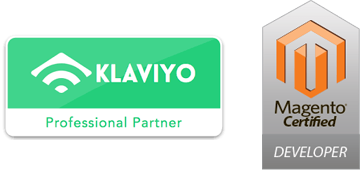Are you looking to automate your email campaigns? Don’t know where to start when it comes to setting up and integrating campaigns to drive more revenue for your business? Here’s my 6 steps to authentic automation success and you’ll be on your way to a successful email marketing campaign!
1.) Define automation marketing goals
If you are an e-ccomerce site you will likely want to implement abandoned cart automations as well as opportunities for cross-sells and upsells. Determining your automation goals and priorities will help you outline a plan and set up the automations you need in the order of importance. For example, you may discover that your cart abandoned rates are higher than normal, or your most popular view product is also your highest exit page on your site. Either way, if you do not have any automation in place I recommend to start with your welcome automation for new subscribers – a series of 7-10 emails that introduces your brand to potential customers and tells your story. From there all of the content developed can be used in successive automations and you will already be building a relationship with your incoming leads.
2.) Showcase your Story
You might be thinking now how am I going to come up with content for 7-10 emails to welcome subscribers? In fact, you might start to get overwhelmed. But all it really is – is just to develop a point of view that’s authentic to the business and your personal brand. Telling authentic stories using the structure of 3 things – a why, a how, and a what.
Why – Why does your company or product exist? As the crucial driver of your company it should be fundamentally apparent in all that you do. Your “why” shouldn’t expire or become obsolete, it should bring a sense of purpose.
How – The how are ways your why gets accomplished. These are practical and organizational elements that will drive your company to achieve your why.
What – The what should answer the why that your company embodies, and should solve the fundamental problem you’re looking to solve.
Why How and What
Lead with WHY this is relevant to the target audience through the lens of the problem that it is solving. Product pitches are a turn-off when buyers are getting to know you. To showcase products, get a customer to talk about a popular use case or create an awesome explainer video that positions your unique strengths.
To learn more about this WHY, HOW and WHAT framework – take a look at Simon Sineks Golden Circle Ted Talk here.
3.) Analyze Your Data
Oftentimes, marketers start their email marketing campaigns by blasting every subscriber on their list with the same message. But just because you can do this, doesn’t mean you should. Fortunately, every serious email marketing platform offers segmentation options that let you divide your subscribers based on specific criteria which make them more likely to act on your personalized emails, including:
Location
Industry
Product or service purchased / not purchased
How they learned about you (for example, if they signed up through a Facebook contest or from your website)
Total Amount Spent to Date (VIP)
Age or Category
By segmenting your subscribers based on actions they took or other identifying elements, you’ll greatly increase the odds that they’ll click through and take the action you want them to take with targeted mailings. So take some time to look at your list, the types of clients you have and how you can segment them to fit your marketing campaigns and promotions.
4.) Get Personal and Connect
It should go without saying, but blasting a message out to anyone and everyone with no real personalization is a sure-fire way to end up in your subscriber’s circular file (or get tons of unsubscribe notifications).
Personalizing your messages, even with simple things such as their name, location or the product(s) they were looking at or have bought, can go a long way toward establishing rapport and fostering a relationship.
5.) Connect Your Emails to Customized Landing Pages
Too often, many marketers concentrate on getting the perfect email ready, only to send readers to a lackluster landing page. Make sure to tailor your landing page to your email campaign and create as much of a seamless transition between them as possible (so your email looks like it would match your landing page in terms of design, content, and call-to-action). This helps your readers feel much more comfortable about clicking, and helps create greater familiarity between your brand and products. Additionally, if you lead customers to your site,
6.) Split Test Your Emails and Analyze!
Many times, marketers reserve split testing for things like their landing pages or calls to action. But what about emails? Any platform you choose should give you the ability to A/B test your emails to determine which one generates the greatest number of clicks and conversions from your target audience.
When split testing your email messages, you’ll also want to take the time to properly analyze and look for certain KPIs (key performance indicators) that let you know if the email was successful, or what you can do better next time. These include:
Email delivery rate – What percentage of the messages you sent actually arrived at your users’ inbox? A low delivery rate means that your server could be blacklisted and you’ll need to contact your web host or ISP to determine why.
View rate – Of the emails that were successfully delivered, how many of them were viewed by recipients? Most email programs have a “preview pane” that allows their users to filter out and delete unwanted messages. Did yours pass the “view” test?
Open rate – Of the users who received and previewed your email, how many actually opened it? This is one of the more important indicators, where your subject line typically does all the heavy lifting.
Click-through rate – Of the users who received, previewed and opened your emails, how many of them clicked your call-to-action? A high click-through rate means that your users found your email enticing and interesting enough to click. This is where the email part of your marketing steps back and puts your landing page squarely in the spotlight.
Conversion rate – Of the users who received, previewed, opened and clicked your email’s call-to-action, how many of them ultimately took the action you wanted? This can be a sale, but it doesn’t have to be. It could be signing up for a webinar, requesting a free estimate, or any other measurable action that you want your subscribers to take.
I hope these tips get you started on your way. Of course, each one takes time in itself, but having a clear idea will help you get one step closer to reaching your email marketing automation goals.


